Rice (Oryza Sativa) it is believed, is associated with wet, humid climate, though it is not a tropical plant. Rice is mainly grown in two types of soils i.e., (i) uplands and (ii) low lands. The method of cultivation of rice in a particular region depends largely on factors such as situation of land, type of soils, irrigation facilities, availability of labourers intensity and distribution of rainfalls. Rice crop needs a hot and humid climate. It is best suited to regions which have high humidity, prolonged sunshine and an assured supply of water.
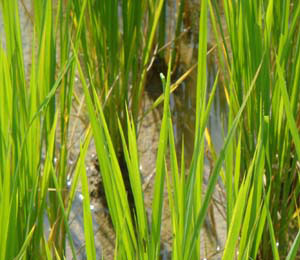
 Stunted, yellowish plants. Older leaves of whole plants are yellowish green
Stunted, yellowish plants. Older leaves of whole plants are yellowish green
 Old leaves sometimes all leaves become light green.
Old leaves sometimes all leaves become light green.
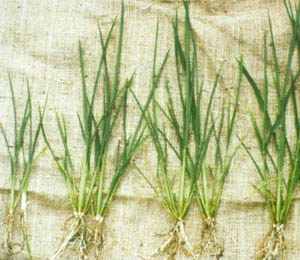
 Plants stunted with reduced tillering.
Plants stunted with reduced tillering.
 Leaves narrow, short, very erect ‘dirty’ dark green. Stems thin and spindly.
Leaves narrow, short, very erect ‘dirty’ dark green. Stems thin and spindly.
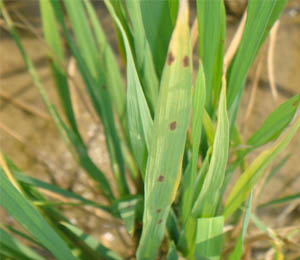
 Dark green plants with yellowish.
Dark green plants with yellowish.
 Brown leaf margins brown necrotic sports on the tips of older leaves.
Brown leaf margins brown necrotic sports on the tips of older leaves.
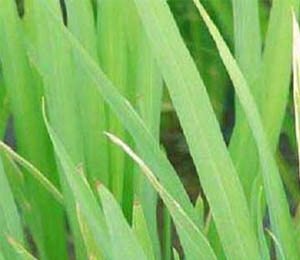
 Chlorotic – necrotic split or rolled tips of younger leaves.
Chlorotic – necrotic split or rolled tips of younger leaves.
 Tips of youngest leaves become white rolled and curled.
Tips of youngest leaves become white rolled and curled.
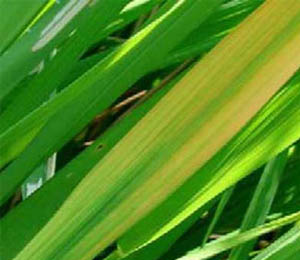
 Leaf chlorotic with white tips.
Leaf chlorotic with white tips.
 Orange-yellow interveinal chlorosis on older leaves.
Orange-yellow interveinal chlorosis on older leaves.
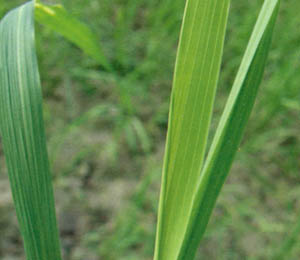
 Pale green plant and light green colored young leaves.
Pale green plant and light green colored young leaves.
 Yellowing of the plants.
Yellowing of the plants.
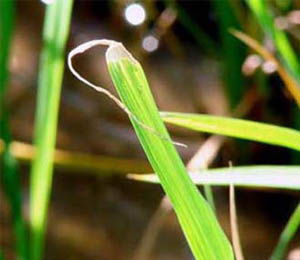
 White rolled leaf tips of young leaves.
White rolled leaf tips of young leaves.
 Reduced height with leaf tips white in colour and rolled.
Reduced height with leaf tips white in colour and rolled.
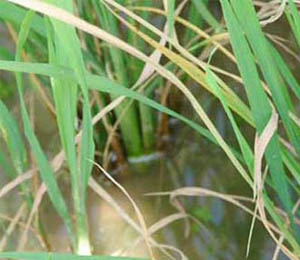
 Chlorotic streaks, bluish green leaves.
Chlorotic streaks, bluish green leaves.
 Leaves bluish green and leaf tip needle-like, while the leaf base appears normal.
Leaves bluish green and leaf tip needle-like, while the leaf base appears normal.
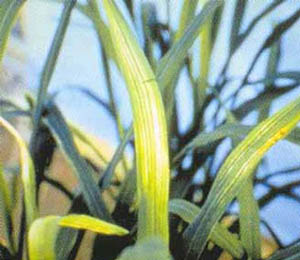
 Interveinal chlorosis starting at the tip of younger leaves.
Interveinal chlorosis starting at the tip of younger leaves.
 Pale grayish green interveinal chlorosis spreading from the tip of the leaf to the base.
Pale grayish green interveinal chlorosis spreading from the tip of the leaf to the base.
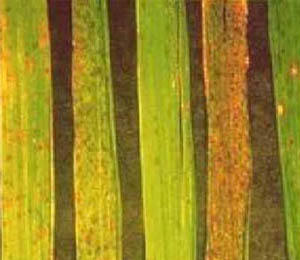
 Soft, droopy leaves and culms
Soft, droopy leaves and culms
 Leaves become chlorotic which later become necrotic brown spots
Leaves become chlorotic which later become necrotic brown spots
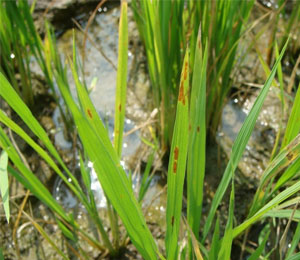
 Dusty brown spots on upper leaves. Stunted plants.
Dusty brown spots on upper leaves. Stunted plants.
 Tillering decreases.
Tillering decreases.